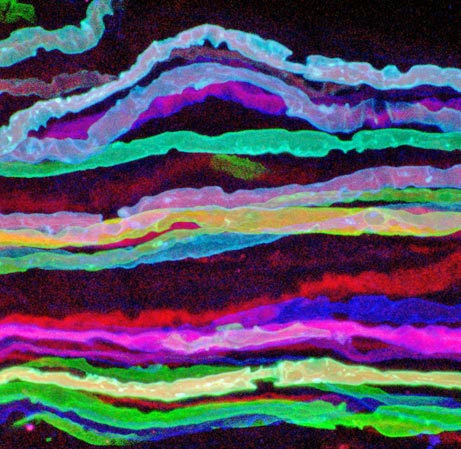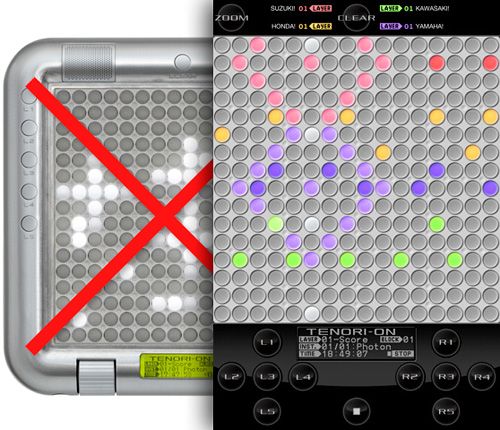
By Evan Ackerman
Trippy pic, right? This is an image of a bundle of nerves inside the brain of a genetically engineered mouse. The colors aren’t caused by an artificial dye (or photoshop), each nerve cell is fluorescing in a unique color thanks to a random combination of cyan, red, and yellow proteins. The idea is to use the coloring to better trace the connections between nerve wires to figure out how the brain communicates, but whatever… If my brain did this, I’d stick a camera up my nose just to watch.
Buckyballs and tractor beams after the jump.
This movie from Rice University shows, for the first time, the formation of one C60 molecule, called buckminsterfullerene (after this guy). Buckyballs are made up of 60 carbon atoms, which form a sphere with faces made out of interlocking hexagons and pentagons, sort of like a nano soccer ball. The above movie shows a buckyball (you can see the round outline) self-assembling on a sheet of graphite at high temperature, and then evaporating. Buckyballs have all sorts of interesting applications, including being the official state molecule of Texas.
It’s not quite the Enterprise, but researchers at MIT have developed a tractor beam made of infrared light that is able to position bacteria (and other teeny tiny things) on the surface of a microchip. The above video shows the tractor beam (actually called “optical tweezers”) moving E. coli cells around a silicon chip to spell “MIT.” You may not think about it much, but photons have mass, and if you throw enough of them at something, stuff happens. In this case, photons bounce off the E. coli cells, transferring enough momentum to move them. What’s it good for? Well, being awesome, but also for making things like tiny biosensors.
VIA [ National Geographic, New Scientist, SMH ]




